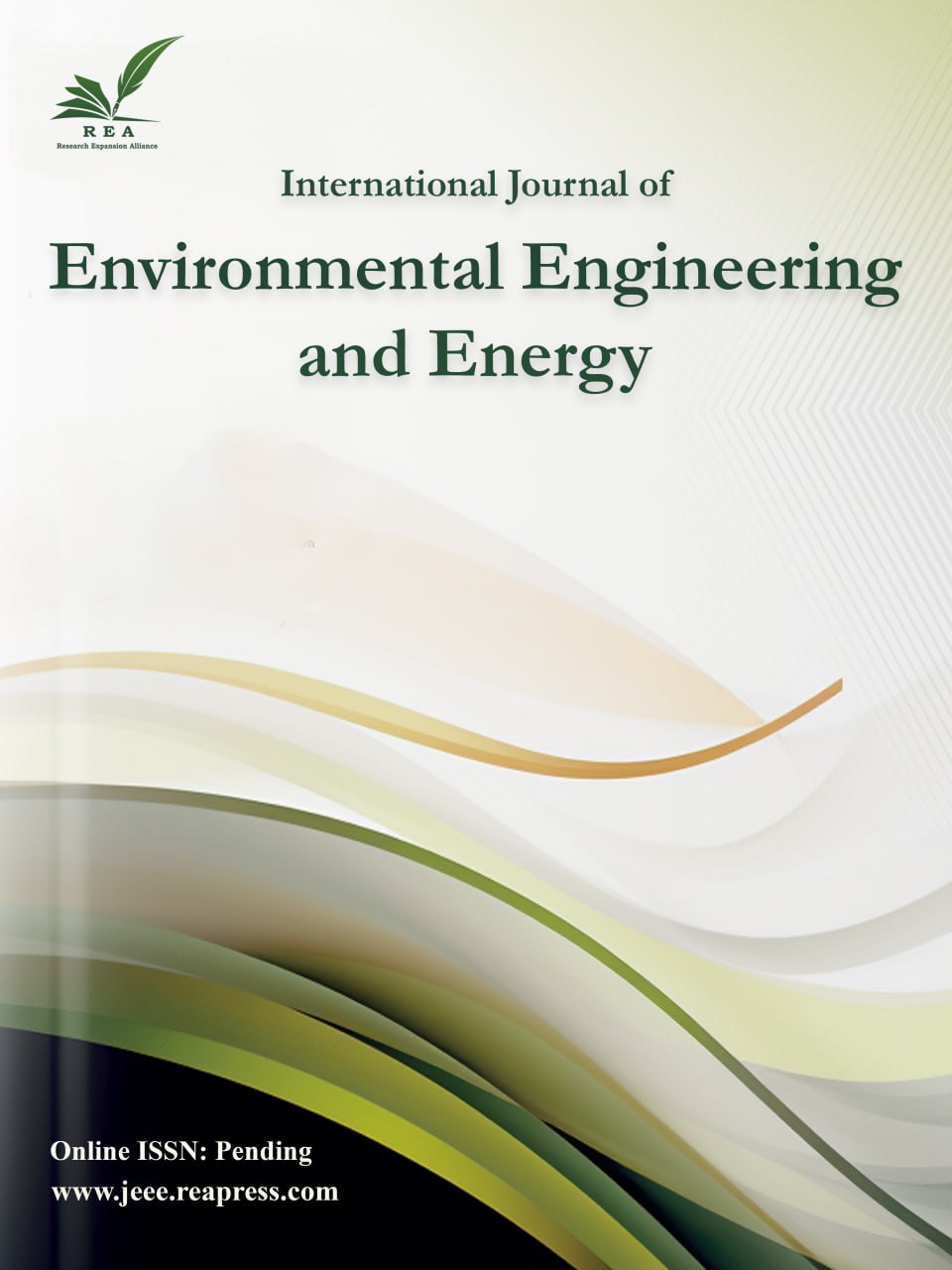Thermodynamic modeling and multi-objective optimization of an operating double-effect absorption chiller driven by photovoltaic panel : A case study
Abstract
The double-effect absorption chiller plays a crucial role in achieving temperature and humidity control, surpassing single-effect chillers in terms of capacity and offering ease of operation when compared to double and triple-effect absorption chillers with more complex cycles. The primary drawbacks of the double-effect absorption chiller are its dependence on fuel for both the absorption cycle and the production of the concentrated lithium bromide solution. In this study, the use of photovoltaic panels to eliminate fuel consumption through a comprehensive thermodynamic model, involving the adjustment of parameters such as chilled water mass flow rate ( and solar cycle mass flow rate ( ), is investigated to determine the optimal cycle state. The results indicate that the COP of the cycle increase as the mass flow rate of chilled water ( increases and reaches 1.7 in the mass flow rate of 5 kg s-1. Additionally, based on the algorothym in regions with access to the electric grid, it is not cost-effective to use energy generated by photovoltaic solar panels to power the absorption chiller cycle.
Keywords:
double-effect absorption chiller, lithium bromide solution, multi-objective optimization, photovoltaic panel, Thermodynamic modeling, Thermodynamic modelingReferences
- [1] [1] Khanmohammadi, S., Razi, S., Delpisheh, M., & Panchal, H. (2023). Thermodynamic modeling and multi-objective optimization of a solar-driven multi-generation system producing power and water. Desalination, 545, 116158. https://doi.org/10.1016/j.desal.2022.116158
- [2] [2] Assareh, E., Asl, S. S. M., Agarwal, N., Ahmadinejad, M., Ghodrat, M., & Lee, M. (2023). New optimized configuration for a hybrid PVT solar/electrolyzer/absorption chiller system utilizing the response surface method as a machine learning technique and multi-objective optimization. Energy, 281, 128309. https://doi.org/10.1016/j.energy.2023.128309
- [3] [3] Jahangiri, A., Ameri, M., Arshizadeh, S., & Alvari, Y. (2023). District heating and cooling for building energy flexibility. In Building energy flexibility and demand management (pp. 173–190). Elsevier. https://doi.org/10.1016/B978-0-323-99588-7.00008-0
- [4] [4] Lubis, A., Jeong, J., Saito, K., Giannetti, N., Yabase, H., Alhamid, M. I., & others. (2016). Solar-assisted single-double-effect absorption chiller for use in Asian tropical climates. Renewable energy, 99, 825–835. https://doi.org/10.1016/j.renene.2016.07.055
- [5] [5] Hasan, M. H., Mahlia, T. M. I., & Nur, H. (2012). A review on energy scenario and sustainable energy in Indonesia. Renewable and sustainable energy reviews, 16(4), 2316–2328. https://doi.org/10.1016/j.rser.2011.12.007
- [6] [6] Wang, S. K., & Wang, S. K. (2000). Handbook of air conditioning and refrigeration. McGraw-hill New York. https://d1wqtxts1xzle7.cloudfront.net/58621136
- [7] [7] Kadam, S. T., Kyriakides, A.-S., Khan, M. S., Shehabi, M., Papadopoulos, A. I., Hassan, I., … & Seferlis, P. (2022). Thermo-economic and environmental assessment of hybrid vapor compression-absorption refrigeration systems for district cooling. Energy, 243, 122991. https://doi.org/10.1016/j.energy.2021.122991
- [8] [8] Hu, J., Teng, K., Qiu, Y., Chen, Y., Wang, J., & Lund, P. (2022). Thermodynamic and economic performance assessment of double-effect absorption chiller systems with series and parallel connections. Energies, 15(23), 9105. https://doi.org/10.3390/en15239105
- [9] [9] Avanessian, T., & Ameri, M. (2014). Energy, exergy, and economic analysis of single and double effect LiBr--H2O absorption chillers. Energy and buildings, 73, 26–36. https://doi.org/10.1016/j.enbuild.2014.01.013
- [10] [10] Mussati, S. F., Gernaey, K. V, Morosuk, T., & Mussati, M. C. (2016). NLP modeling for the optimization of LiBr-H2O absorption refrigeration systems with exergy loss rate, heat transfer area, and cost as single objective functions. Energy conversion and management, 127, 526–544. https://doi.org/10.1016/j.enconman.2016.09.021
- [11] [11] Alahmer, A., Wang, X., Al-Rbaihat, R., Alam, K. C. A., & Saha, B. B. (2016). Performance evaluation of a solar adsorption chiller under different climatic conditions. Applied energy, 175, 293–304. https://doi.org/10.1016/j.apenergy.2016.05.041
- [12] [12] Jafarian, M., Arjomandi, M., & Nathan, G. J. (2013). A hybrid solar and chemical looping combustion system for solar thermal energy storage. Applied energy, 103, 671–678. https://doi.org/10.1016/j.apenergy.2012.10.033
- [13] [13] Choudhury, B., Saha, B. B., Chatterjee, P. K., & Sarkar, J. P. (2013). An overview of developments in adsorption refrigeration systems towards a sustainable way of cooling. Applied energy, 104, 554–567. https://doi.org/10.1016/j.apenergy.2012.11.042
- [14] [14] Lawson, M. B., Lithgow, R. A., & Vliet, G. C. (1982). Water-lithium bromide double-effect absorption cooling cycle analysis. ASHRAE trans. united states, 88. https://doi:10.2172/6727822
- [15] [15] Kaushik, S. C., & Chandra, S. (1985). Computer modeling and parametric study of a double effect generation absorption refrigeration cycle. Energy conversion and management, 25(1), 9–14. https://doi.org/10.1016/0196-8904(85)90063-9
- [16] [16] Xu, G. P., Dai, Y. Q., Tou, K. W., & Tso, C. P. (1996). Theoretical analysis and optimization of a double-effect series-flow-type absorption chiller. Applied thermal engineering, 16(12), 975–987. https://doi.org/10.1016/1359-4311(96)00011-7
- [17] [17] Xu, G. P., & Dai, Y. Q. (1997). Theoretical analysis and optimization of a double-effect parallel-flow-type absorption chiller. Applied thermal engineering, 17(2), 157–170. https://doi.org/10.1016/S1359-4311(96)00021-X
- [18] [18] Sun, D.-W. (1997). Thermodynamic design data and optimum design maps for absorption refrigeration systems. Applied thermal engineering, 17(3), 211–221. https://doi.org/10.1016/S1359-4311(96)00041-5
- [19] [19] Lubis, A., Jeong, J., Giannetti, N., Yamaguchi, S., Saito, K., Yabase, H., … & others. (2018). Operation performance enhancement of single-double-effect absorption chiller. Applied energy, 219, 299–311. https://doi.org/10.1016/j.apenergy.2018.03.046
- [20] [20] Shirazi, A., Taylor, R. A., White, S. D., & Morrison, G. L. (2016). Transient simulation and parametric study of solar-assisted heating and cooling absorption systems: an energetic, economic and environmental (3E) assessment. Renewable energy, 86, 955–971. https://doi.org/10.1016/j.renene.2015.09.014
- [21] [21] Bagheri, B. S., Shirmohammadi, R., Mahmoudi, S. M. S., & Rosen, M. A. (2019). Optimization and comprehensive exergy-based analyses of a parallel flow double-effect water-lithium bromide absorption refrigeration system. Applied thermal engineering, 152, 643–653. https://doi.org/10.1016/j.applthermaleng.2019.02.105
- [22] [22] Behzadi, A., Gholamian, E., Ahmadi, P., Habibollahzade, A., & Ashjaee, M. (2018). Energy, exergy and exergoeconomic (3E) analyses and multi-objective optimization of a solar and geothermal based integrated energy system. Applied thermal engineering, 143, 1011–1022. https://doi.org/10.1016/j.applthermaleng.2018.08.034
- [23] [23] Zheng, W., Yang, J., Zhang, H., & You, S. (2016). Simulation and optimization of steam operated double effect water-LiBr absorption heat pump. Applied thermal engineering, 109, 454–465. https://doi.org/10.1016/j.applthermaleng.2016.08.113
- [24] [24] Chahartaghi, M., Golmohammadi, H., & Shojaei, A. F. (2019). Performance analysis and optimization of new double effect lithium bromide-water absorption chiller with series and parallel flows. International journal of refrigeration, 97, 73–87. https://doi.org/10.1016/j.ijrefrig.2018.08.011
- [25] [25] Newnan, D. G., Eschenbach, T. G., & Lavelle, J. P. (2004). Engineering economic analysis (Vol. 1). Oxford University Press. https://doi.org/10.1016/j.renene.2015.09.014
- [26] [26] Ardalan, A. (1999). Economic and financial analysis for engineering and project management. Crc Press. https://doi.org/10.1201/9781482293951s


